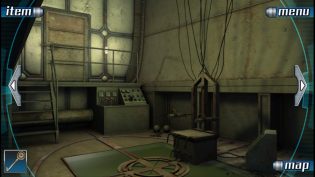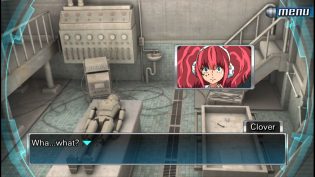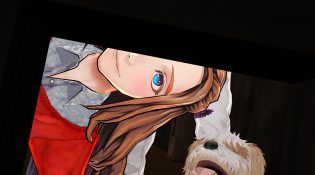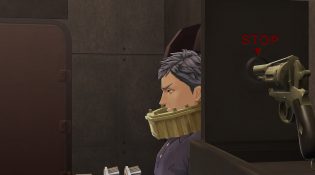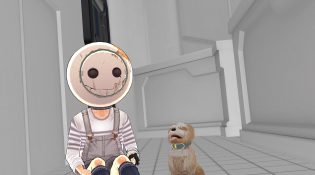I’ve been curious about what became Zero Escape Trilogy for a while now. Original 999 (Nine Hours, Nine Persons, Nine Doors) was released back in 2009 on Nintendo DS to very positive reviews on how it tackled the mix of visual novel and “escape the room” puzzles, while also using it’s branching narrative, common for visual novels, as a plot point for many worlds interpretation influenced plot. It was also one of the first attempts, to my knowledge, to bring the Cube (the movie) ideas to video game format, mixing horror, thriller and mystery novel and becoming somewhat of the “What if Cube, Saw and Agatha Christie’s “And Then There Were None” were anime”. Virtue’s Last Reward followed 3 years later on PS Vita and 3DS, and then in 2016 Zero Time Dilemma was released as a final chapter of the plot on the same systems, but also on PC. However, it wasn’t until Zero Escape: The Nonary Games release last year, that updated and re-released the first two games in one package, that I finally had a chance to check on them.
As mentioned, all games are made with the same basic structure: most of the story is told via visual novel segments, which tend to have no puzzles or choices (though that gradually changes with every next game), while at times game switches to the escape the room puzzles, which require you to solve puzzles, find items and do the usual puzzle game stuff to get to the next visual novel bit. Another common concept is the idea of branching timelines and multiple endings. First game had very few of them and, as such, in the original version didn’t have a Flow Chart for “jumping” between the timelines, but starting with the second game the timelines and jumps between them become much more complex. Being influenced by Cube and Saw, games also tend to deal with pretty dark themes and while it varies from game to game, it is common to expect lots of characters dying in horrible ways in different timelines with the main goal, usually, being finding the best possible solution where no one should die. Finally, I should really mention that the entire trilogy has absolutely amazing soundtrack by Shinji Hosoe and while very few tracks seem to be exclusive to a particular game and most themes repeat from game to game, the themes themselves are really good and it is a real shame that the soundtracks are not sold alongside the games. Now onto the specific games.
Nine Hours, Nine Persons, Nine Doors is genuinely amazing. It’s probably the simplest game in terms of the plot and the stakes, but is also probably best told story in the series. Originally intended as a one-off, it tells a more personal story and tries to keep its plot and characters more or less realistically. While there’s still lots of philosophical and pseudo-scientific banter and sometimes characters over-analyze something, while some characters still look ridiculous and some scenes with them are just absurd, it’s more of a strange anomaly in the otherwise tightly written mystery tale. The Nonary Games remake of the game also features the much needed improvements to the title, like the completely not obvious ability to “jump” between story segments – you need to click a segment 4 (!!!) times to jump to it, something that works differently and more obviously in later games. At the same time, the remake sadly almost completely looses one creative storytelling trick that originally utilized the dual-screen nature of the DS and a few puzzles that also utilized the 2 screens are remade. They’ve been updated in a really good way and overall improvements in this version are very much worth it, but it still makes the original DS release its own thing. Highly recommend playing The Nonary Games version (though note, it’s 1080p max for whatever reason).
Virtue’s Last Reward is where things get quite a bit crazy. The plot goes into a very global and more sci-fi direction, characters are a bit more ridiculous and over the top than last time and unlike a more straightforward storytelling of the first game, with few branches, VLR is all about constant jumping from timeline to timeline. On one hand, characters still manage to be interesting, plot is still curious and puzzle rooms really well done for the most part. On the other, there’s a lot more completely inappropriate joking, out of nowhere “wacky” scenes, dumb plot developments, ridiculous philosophical and pseudo-scientific bantering and, most importantly, the amount of plotlines and jumps between them gets genuinely overwhelming. There’s no “good way” to experience the game, since in most cases you won’t be able to actually get to the end of the storyline without jumping to another and with them being so many things get really confusing and tiring. It’s still a really good game and is part of The Nonary Games that I highly recommend (even despite the mentioned 1080p resolution limit), but don’t feel bad if you’ll get over the game before it’s done.
Zero Time Dilemma is a mess. Most of it feels as if “David Cage really liked Saw and was Japanese”, since instead of following on the cohesive storylines like in previous games, you’re usually just presented with a scene, barely connected to other scenes (a common issue of Quantic Dream games). And then the scene develops, usually involving the escape the room segment, and then it ends with either everyone or some people dying in absolutely horrible shock value torture porn pointlessly brutal ways, or ending with less gore but then dropping the scene and asking you to go to another mostly disconnected one. There is a story reason for this structure and the 3 main characters instead of one approach does bring in curious possibilities for the story, but it’s so dumb most of the time and very much not worth it. You will be watching people dying horribly and then going “Oh, this reminds me of this famous philosophic dilemma!” and proceeding to talk about it for several minutes (while still dying or in immediate danger of horrible death). And when everything has been explained, you’ll see that barely anything has been resolved, and what was, was done in such an unnecessarily convoluted way that the whole experience feel like it wasn’t worth it. And it really isn’t worth it. There are rare smart moments, there are rare great puzzles. But unlike The Nonary Games, ZTD is not something I can recommend to anyone but the absolute die-hard-est fans of the series.



